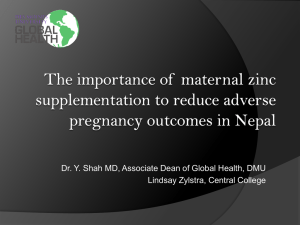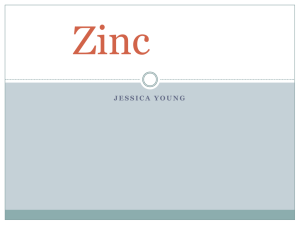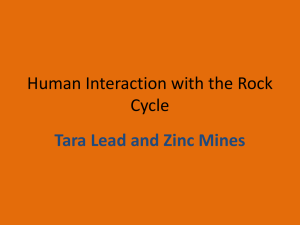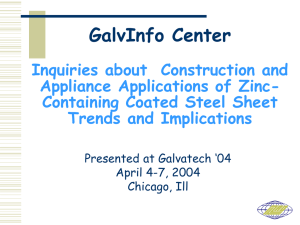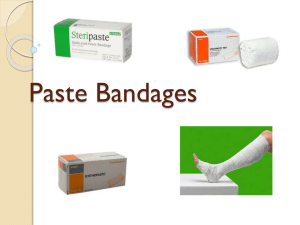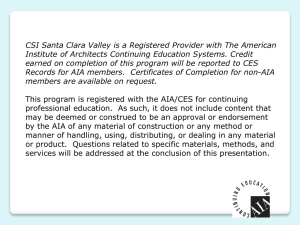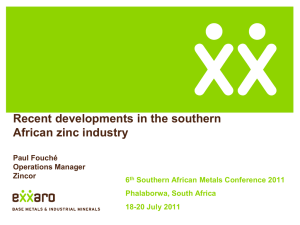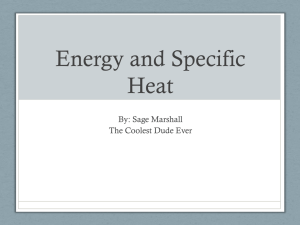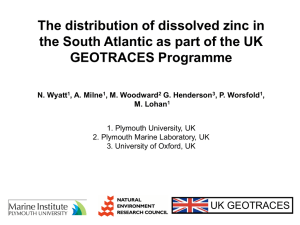File
advertisement
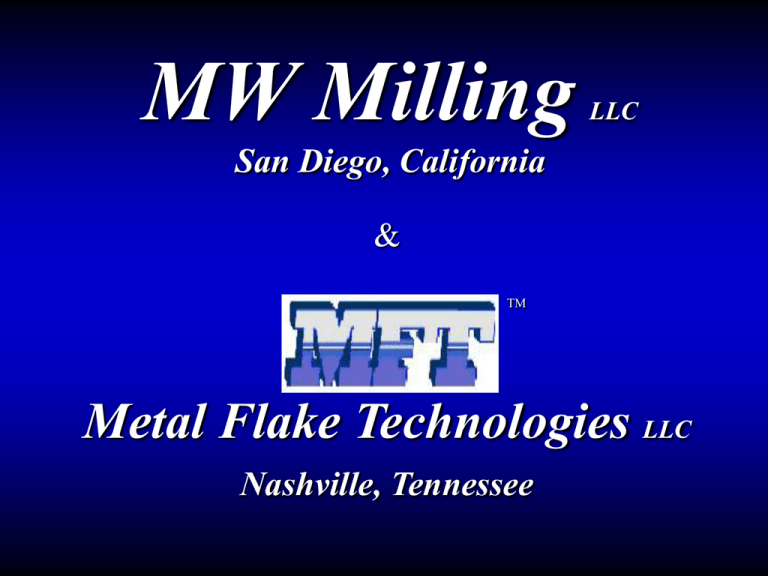
MW Milling LLC San Diego, California & TM Metal Flake Technologies LLC Nashville, Tennessee Hiding in Plain Sight Might We Already Have A Sensible Antifouling Alternative….. and Not Even Realize It ?? What Are We Fighting? A Flurry Of Activity • The “Gold Standard” Tri-Butyl Tin *Banned By International Maritime Organization *Banned Individually By Most Maritime Countries • The “Replacement” Copper *Banned or Max Leaching Rates Imposed in Many Countries *IMO Concern and Dialogue Growing *California Imposed Outright Ban in Impaired or Sensitive Areas *History and Political Inertia Indicate Severe Restrictions In Near Future • “Copper-Free” Foul Release, Algaecidal *Durability Concerns Remain *Launchable Time, Special Application Equipment??? My Cleaning Frequency Go Up? Did You Say That Was???????? • “Exotics” *Does *How Much Metallizing, Ceramic, Slip Liner *Industry Needs Retraining and Education About The Process *Very High Implementation Costs High Tech and Ultra Engineered Coatings • Self-polishing copolymer, an elegant formulation that • • • • • controls biocide delivery and extends coating effective lifespan. Ablative formulations either hard or soft constantly slough off to expose active biocide. Low surface energy formulations take advantage of slickness to deter fouling growth without the use of biocides. Chemical biocides as primary agent or in combination with another agent. Hybrid systems use combinations of all of the above. Thermal Spray coatings. Who Am I? • • • • • • • • I have been in the paint industry for 100 years. Billions of dollars are saved every year because of me. Everybody knows how to use me. I am cheaper than many of my peers. I am not currently banned or restricted. * I am already used throughout the marine industry. I provide fantastic cathodic protection. Data has shown me to be a good anti-fouling substance if used correctly. * California has established some localized TMDL’s. Zinc but in the form of a flake CA Regional Water Quality Control Board Chollas Creek CMC (Criteria Maximum Concentration) Copper Zinc 13 ug/l 120 ug/l CCC (Criteria Continuous Concentration) Copper Zinc 9 ug/l 120 ug/l So Who Says Zinc Works? • US Army Corps of Engineers…… ZMR-2-15 Nov. 1994 • Marine Environmental Research… Two Surprises From Inorganic Zinc-rich Silicate Coating, C. William Anderson, EPA Publishing • United States Patent 4835050 US Army Corps of Engineers Zebra Mussel Research Program Black Rock Lock November 1994 T. Race and Dr. A. Miller Goal: Evaluate the efficacy of antifouling coatings as a function of metal leaching rate. Test Structure: Determinations of in situ test panel performance and in vitro panel leach rate. Duration: 15 months Conclusion about zinc: “zinc coatings would offer a significant advantage in terms of cost and simplicity over other antifoulants.” Marine Environmental Research Two Surprises From Inorganic Zinc-rich Silicate Coating Dr. C. William Anderson Publisher: U.S. EPA Office of Research and Development Research Summary: The interface between any surface and an ionic solution (seawater) has an inherently electrochemical character. This study examined an antifouling approach that exploited this electrochemistry. Results: While the initial suspicion was that the charge applied to the coating was the principal antifouling factor,…..it became clear that the zinc had profound effects on the larval metabolism (especially on the charged polymer glue) in barnacles. Dr Dan Rittschof….Duke Univ. United States Patent 4835050 • 1986 Patent claiming: “A non-toxic composition of matter capable of providing long- lasting suppression of the growth of fouling organisms in an aquatic environment…. such that said composition is capable of generating a voltaic current.” • Concept: This invention relates to paints which store a voltage in a composition consisting of a large multiplicity of very small (zinc) particles capable of producing an emf and thus a potential difference. The mechanical mixture of metal powders when incorporated in a suitable vehicle makes a good antifouling paint. When it is applied to a Zinc coated steel surface or a wood surface it will, when immersed in an electrolyte such as sea water, provide millions of small individual batteries that act to prevent the attachment of marine animals such as Barnacles, Tunicates, Oysters, Clams and other organisms and also will serve to retard vegetation growth on the panels exposed at antifouling stations for months or years at a time. Most of the miniscule antifouling batteries were included in a non-leachable vehicle suitably diluted with solvent. • Results: All of the samples gave most encouraging results, but in this test two were outstanding: the 50--50 Zinc Tin and the 90% Zinc and 10% Graphite. Both samples were completely free of all growth, both animal and vegetative and there was no slime giving them a rating of 10. Most of the other samples were almost free of barnacles, and if there were barnacles they were very tiny especially in comparison with barnacles growing on the wooden frames which were on average about 20 times as large. The combination of zinc with a non-metal was striking and further validates the voltaic cell principle. The Corrosion Advantage Two Birds With One Stone? NewCo Paint ZFLAKE Top and Bottom Anti-Corrosion/Anti-fouling Marine Coating Move Over Dust… Zinc Flake Does The Job Better and At Less Cost • • • • • • • Corrosion Control At 40% Lower Loading Rates Less Weight In Dry Film Improved Pot Life Improved Application Characteristics Proven Salt Spray Performance No Change In Binder Chemistries Environmental Impacts Already Known Why Will My Loading Rates Drop? Does Particle Shape Mean Something? • A sphere has the smallest surface area of • • any shape that encloses a given volume. A sphere encloses the largest volume of any shape with a given surface area. A flake has 3 times the surface area of an equivalent volume of a sphere. Graphic courtesy of ZRC Worldwide Physical Comparison of Dust vs. Flake Dust Particle – 8 um sphere • • • • • • Area = 201 sq um (r = 4 um) Tap Density = 7 gm/cm3 Typical Loading Rate = 75-90% 11-17 lbs into a paint vehicle Weight of 75 um dry film solvent based coating = 185g/m2 Salt Spray = 2000+ hours @ 15um DFT 8um sphere made into flake • • • • • • Area = 684 sq um (125 x 45 x1) Tap Density = 2 gm/cm3 Typical Loading Rate = 35-50% 6-10 lbs into a paint vehicle Weight of 75 um dry film solvent based coating = 53g/m2 Salt Spray = 2000+ hours @ 15um DFT Sphere Scanning electron micrograph of zinc dust to flake Scanning electron micrograph of zinc flake made from dust on left Zinc Dust Coating After 900 Hrs Salt Spray Zinc Flake Coating After 900 Hrs Salt Spray Zinc Flake • • • • • • • • • • Anti-Fouling Capability Established Industry Already Educated In It’s Use Lower Cost Than Other Active Ingredients Corrosion Control At 40% Lower Loading Rates Less Weight In Dry Film Improved Pot Life Improved Application Characteristics Proven Salt Spray Performance No Change In Binder Chemistries Environmental Impacts Already Known What Needs To Be Done? Implement longer term evaluation to establish service life expectation Field test a vessel with trial coating to prove durability and identify hull cleaning schedule Contact Metal Flake Technologies! Thanks!
